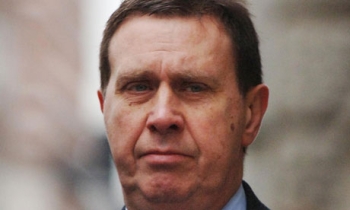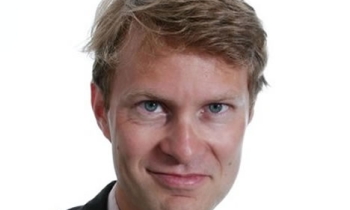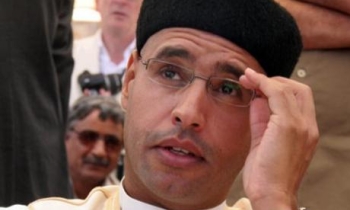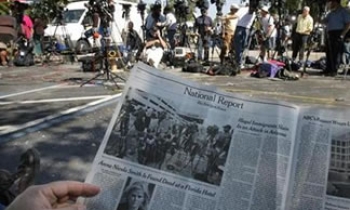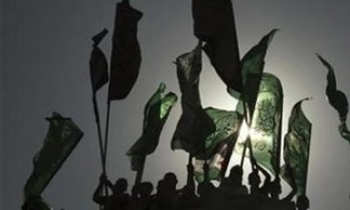The sins of the press -- and they were plentiful -- hardly went unnoticed in the early decades of the last century. The early critics -- Will Irwin, Walter Lippmann, Upton Sinclair, and George Seldes -- were biting, outrageous, irreverent, setting a standard of readability that later critics have been hard pressed to match.
In 1911, Will Irwin, a former newspaper reporter and editor of McClure's Magazine, in a bracing fifteen-part series in Collier's, chronicled in bold detail abuses of the press, appealing for a new role for journalism: "an electric light in a dark alley."
Walter Lippmann, in his groundbreaking 1922 book, Public Opinion, offered his own striking metaphor: the press, he wrote, was "like the beam of a searchlight that moves restlessly about, bringing one episode and then another out of darkness into vision." Two years earlier, Lippmann, with Charles Merz, wrote a book-length article in The New Republic calling The New York Times's coverage of the Russian Revolution "nothing short of a disaster."
The Brass Check, a self-published 1920 best-seller, took its name from a method of payments in brothels. It contains Upton Sinclair's accusations that the press prostituted itself in the name of big business, a theme repeated a generation later by George Seldes, whose newsletter, In fact, sold more than 100,000 copies at its height.
With the exception of Lippmann, who became the ultimate insider, these critics viewed themselves as muckrakers and loners. There was, however, little regular or systematic criticism. The time was ripe for a formal press review when, in 1961, the Columbia Journalism Review first appeared.
Fourteen years earlier, the Hutchins Commission, in its signature volume A Free and Responsible Press, had called for more criticism of the press -- a plea that fell on deaf ears for many years.
The 1960s was a decade when the print press lost some of its authority and television news matured, a decade when the press was unshackled from long-held constraints in reporting about public officials (thanks to the Supreme Court's ruling in Times v. Sullivan in 1964), a decade of profound social and political tumult. And a decade that led some of the best journalists to search for new forms ("new journalism") and for others to become politicized.
Outsiders were often more daring and penetrating in their criticism of the press than the press itself. Using language rarely used by journalists in appraising their own performance, Vice President Spiro Agnew called reporters "nattering nabobs of negativism" in a memorable, if over-the-top, display of alliteration. In Commentary, Daniel Patrick Moynihan, then in the Nixon White House, spoke derisively of reporters as "charter members of the adversary culture."
Within a decade, a new generation of edgier and more politicized journalism reviews sprang forth. Many of the thirty or so reviews were locally based, holding local media accountable.
Except for the St. Louis Journalism Review and the Washington Journalism Review (which transformed itself into a ten-times-a-year national review, the American Journalism Review), the local reviews did not last long. Their function was partially absorbed by the burgeoning alternative press, led by The Village Voice, which hired Alexander Cockburn to skewer the establishment press.
In the early 1970s, a small group of talented, disenchanted New York-based journalists founded MORE. It did not make it to the 80s.
Other types of specialized criticism abounded. It came from the right, Accuracy in Media (AIM), and then from the left, Fairness and Accuracy in Reporting (FAIR). It appeared in magazines intended for journalists, such as Quill and Nieman Reports.
In the late 1990s, a journalism review intended for a general audience -- Brill's Content -- appeared. But, after three years of publication, it proved too costly to sustain as a monthly and suspended publication.
Earlier attempts in periodicals to reach a broad audience met with mixed success. In Time and Newsweek, press sections cropped up in the 1960s. These sections tended toward news coverage instead of analysis, and have largely vanished as the newsweeklies have drastically revised their notion of beats.
Slowly, the big newspapers began covering the press as a beat. In the 1970s, for instance, reporters at The New York Times often wrote smart analyses, but only rarely delved into the workings of the nation's most important news outlet, the Times itself. Over the years, the Times has significantly increased its coverage of the media while reducing its analysis. Coverage is now anchored in the financial section, an appropriate spot to gauge the commercialization of the press, but an awkward vantage point from which to assess the press's social, political, and cultural impact.
Although press criticism on the airwaves has a distinguished heritage (in the late 1940s, CBS, encouraged by the legendary Edward R. Murrow, began a short-lived fifteen-minute weekly radio program called CBS Views the Press), there has been relatively little interest in that special form over the years. Inside Story offered nuanced coverage of the media in the early 1980s on PBS, but it had a limited run. In 1985, the late John Chancellor was host of an ambitious one-hour special on NBC on press issues, A Portrait of the Press, Warts and All. The documentary was aired in an unforgiving time slot: 10 p.m. on a Saturday night. It finished near the bottom in that week's ratings, and few hour-long documentaries about the press appeared on network television after that.
Three notable efforts of media criticism on the air do survive -- On the Media, on Sunday afternoon public radio show, Reliable Sources, a weekly show on CNN hosted by Howie Kurtz, the indefatigable critic for The Washington Post, and Terry Smith's occasional segment on the NewsHour.
Press coverage may no longer be scarce, but self-criticism remains rare. David Shaw, now in his third decade at the Los Angeles Times, soldiers on with his distinguished, book-length articles dissecting the media, including his employer. The ombudsmen movement gained currency in the late 1960s, led by the Louisville Courier-Journal and The Washington Post. Today only a few newspapers have ombudsmen who write regularly about their own employers. Although no more than three dozen newspapers have ombudsmen today, they have created a vibrant organization, with the sly acronym, ONO (Organization of News Ombudsmen).
Just as in the early years of the last century, much of the most enduring contemporary criticism of the press comes from those outside journalism, from sources as varied as moviemakers and the federal judiciary.
The hectoring pack of journalists in Tom Wolfe's The Right Stuff and Howard Beale's Lear-like cry of anguish in Network are some of the unforgettable images that shape the perception of the contemporary press.
Similarly, few of the contemporary press critics have captured the nuances of the modern press as crisply as have a couple of federal judges -- Alex Kozinski of the appeals court in California and Richard Posner of the appeals court based in Chicago. Kozinski wrote a brilliant and authoritative history of the quotation mark in his decision favoring Jeffrey Masson, the rogue Freudian, over Janet Malcolm of The New Yorker (Malcolm ultimately prevailed at trial).
In one opinion, Posner graphically demarcated the boundaries of press privacy (the ultimate taboo, he noted, was a discussion of defecation). In another often-cited opinion, he demolished the high-minded practitioners of undercover reporting (while actually ruling in favor of the reporters who went undercover inside a corrupt eye clinic). "Investigative journalists well known for ruthlessness promise to wear kid gloves," he wrote. "They break their promise, as any person of normal sophistication would expect."
The path taken by media criticism in the past century has been a jagged one, resisting any sweeping generalization, except to say that there is a lot more of it than there used to be, including uncounted efforts of varying quality on the Internet.
The most beloved critic was A. J. Liebling, who, fresh from a tour as a World War II correspondent, triumphantly revived The Wayward Press column in The New Yorker (a feature started in 1927 by humorist Robert Benchley) for nearly two decades.
Liebling, like Irwin, Sinclair, and Seldes before him, targeted corporate concentration of the press as an issue -- an issue that has been picked up by modern critics such as Ben Bagdikian and Ken Auletta. Money, wrote Liebling, "is not made by competition among newspapers, but by avoiding it."
In this instance, the critics certainly have been asking the right question, but the criticism has not led to the desired effect: the media are surely more consolidated now than a century ago.
In other instances, the press critics may not be asking the right questions at all. For example, with certain stories obsessively overcovered, why are so many others missed entirely? And what are those stories that are not covered?
What we need is more distinctive voices of outrage that can be heard over the din. We need more self-criticism, not just more press coverage.

